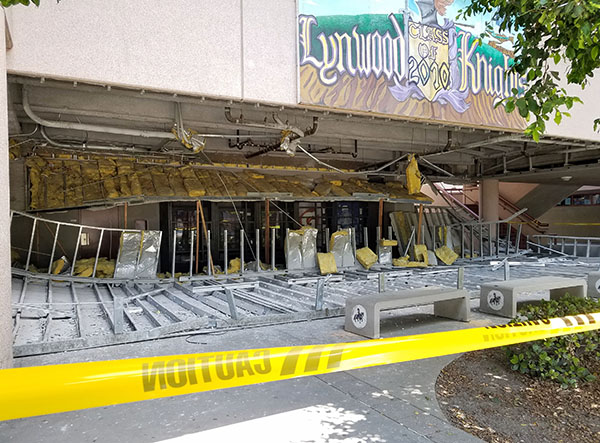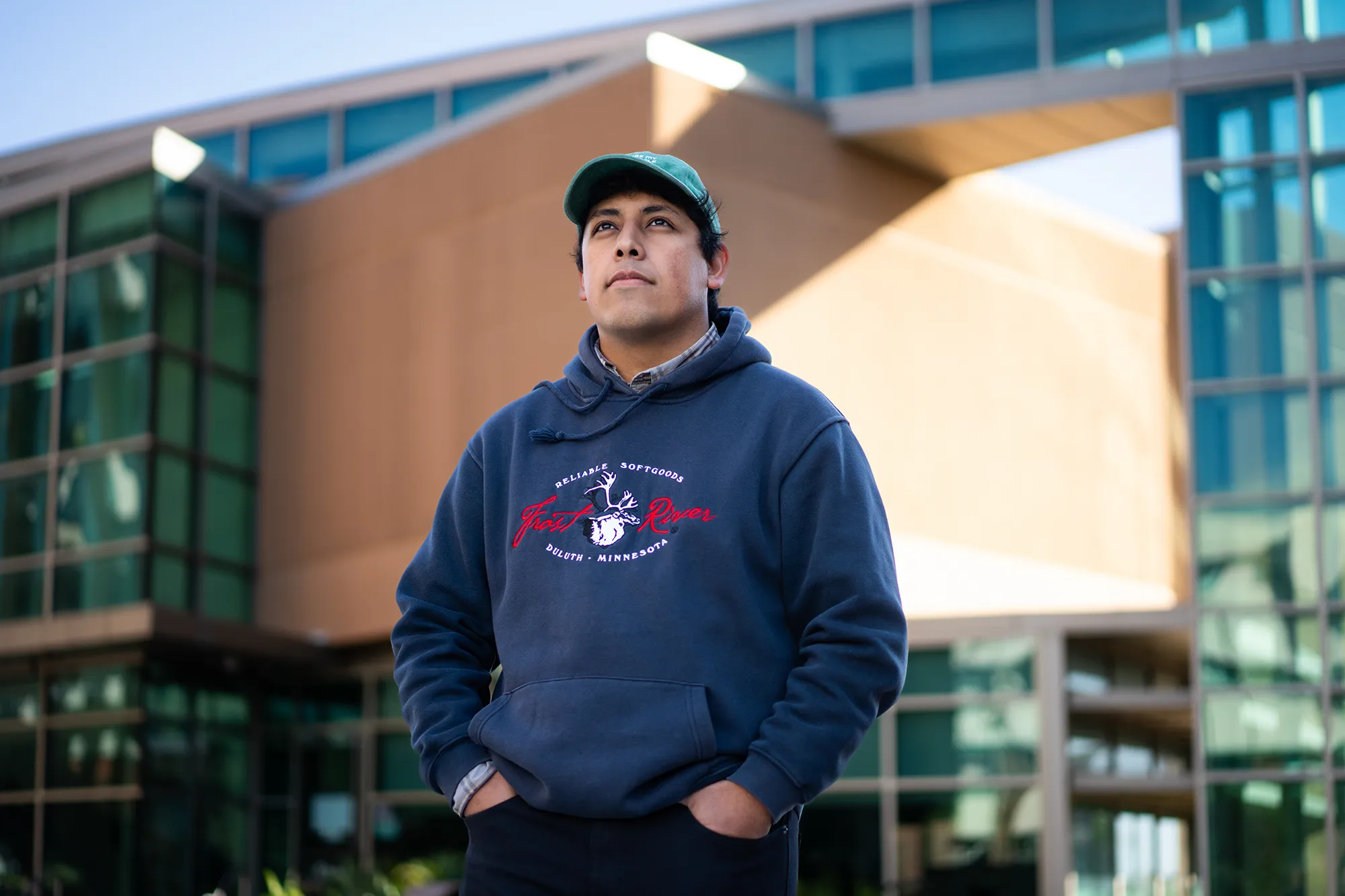By Alfredo Santana
Contributing Writer
LYNWOOD — The price tag to remove unsafe ceilings at the shuttered Lynwood High School has soared to more than $1 million, school district officials told parents and other concerned community members last week during a virtual town hall meeting.
The district announced that Lynwood Middle School students will shift to Hostler and Cesar Chavez middle schools during the 2021-22 academic year in an emergency measure to make room for the Lynwood High students who will be taught on the middle school campus next year.
Hostler Middle School is expected to receive 1,000 students, while Cesar Chavez Middle School would get another 800, said Shawna Dinkins, assistant superintendent of education for the Lynwood Unified School District during a webinar hosted by the district on Feb. 4.
Dinkins added that all fifth graders who transition to sixth grade will remain in their respective elementary schools to continue instruction, as the district moves forward with an investigation into the cause of the first-floor ceiling collapse at Lynwood High School’s G building last June.
The district announced Jan. 27 that Lynwood High School would be closed for the 2021-22 school year following a structural safety review of the campus that revealed unsafe buildings.
The school board took action Jan. 24, voting to close the Lynwood High campus next year and have Lynwood Middle School serve as the high school campus.
Lynwood High has an enrollment of nearly 2,200 students.
“[School] changes may be extended to conform with repairs at Lynwood High School,” Dinkins said.
District Superintendent Gudiel Crosthwaite said the hiring of Petra Structure Engineers to troubleshoot the structural damages would enable the district to address building repairs, and any others issues found in the 23-year-old high school.
However, what caused the ceiling to fall remains a mystery, and it won’t be known until the firm releases a final report later this year, he said.
On Oct. 8, 2020, the district hired AP Construction for $748,000, to retrieve and demolish the soffit plasters and “supporting superstructure” at classrooms buildings 5000, 6000 and 7000. This job has been called Part A of the high school repair project
The school board also contracted with Fast Track Construction for $330,000 to handle Part B, which includes removing and demolishing the soffits, the aluminum shafts and supporting structures from the performing arts center, the north entrance covered walkway, the gym, shower and locker building, the library, the breezeway between the administration and the library, the administration, food services and the J building’s east entrance covered walkway.
Both companies committed in writing to finish Part A and Part B by mid-December 2020.
Funds to cover those jobs had been appropriated from Measure N, a voter-approved bond program in 2012 that provides $65 million for the district to make school upgrades and repairs.
The district also entered into an agreement with TYR Inc. for hourly fees at $75, with a maximum of $12,600, to certify the inspection along with the emergency removal of the damaged ceiling segments.
The district agreed to pay Petra Structure Engineers $30,000, and also contracted Sandy Pringle Associates, another demolition firm, to remove more rubble for a maximum of $9,500, in accordance with Division of Architect regulations.
Under the agreement, Sandy Pringle Associates provided job updates with pictures posted in the district web portal that show large portions of ceiling panels, composed of aluminum rebar, drywall and a mesh of other construction materials, had been removed.
Additional images reveal areas with the soffits still installed are being retained with wood beams anchored to the ground to avert more collapses.
Crosthwaite dismissed speculation that the weather or earthquake faults could be blamed for the ceiling collapse.
“I don’t care whether it was cold weather, an earthquake or who knows,” he said. “You are here to get accurate information. I want to make sure we are safe, our kids are safe and we continue with education and its quality programs.”
Crosthwaite addressed parents and community members by Zoom and telephone.
The district’s Chief Business Officer Greg Fromm indicated one-story buildings have “lesser extent” damages, but did not mention their repair cost, because he said the estimates would be ready when the structural study is concluded.
Nonetheless, Fromm said those jobs “could be completed before the end of the 2021-22” school year.
On reference to COVID-19 and the possibility to reopen schools before next fall, Dinkins said the district monitors federal, state and county health guidelines to mitigate contagion in classrooms, and the Center for Disease Control currently calls for a ratio of 12 students per teacher as a maximum to restart in-person instruction.
She told people participating in the meeting that the region recently crawled out from the state’s tracking purple tier, or widespread level, into the red tier, bracket that poses substantial risk of virus transmission, but permits classroom teaching only if the county averages 4 to 7 new cases per 100,000 residents for two weeks in a row.
Dinkins pledged to keep students, parents and district staff updated with regulations related to possible school reopenings.
“We are under county health guidance, and we will inform our families as new information becomes available,” Dinkins said.
Crosthwaite said preventive measures to combat the spread of the coronavirus, such as requiring face masks, hand sanitizers in all classrooms and at staff offices, and social distancing will continue during 2021, because children under 16 cannot be inoculated with any of the two coronavirus vaccines available for adults, and most teachers are wary of resuming work in the classroom unless they have been vaccinated.
“We as a district cannot mandate staff to get vaccinated,” Crosthwaite said. “However, the state’s Department of Education can.”
He announced a partnership with Compton and East Los Angeles colleges to tailor credit classes for potential high school transfers while they work to graduate from Lynwood, and encouraged parents and students to participate in the virtual conferences to share ideas and address issues such as public transportation for school.
Crosthwaite and Dinkins said a hybrid of online and in-person classes would unfold as schools slowly reopen, but they expect to continue with virtual instruction for at least another year for students uncomfortable returning to regular school.












